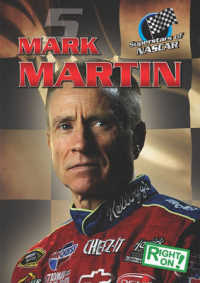- ホーム
- > 洋書
- > 英文書
- > Computer / General
Full Description
Good game design happens when you view your game from as many perspectives as possible. Written by one of the world's top game designers, The Art of Game Design presents 100+ sets of questions, or different lenses, for viewing a game's design, encompassing diverse fields such as psychology, architecture, music, visual design, film, software engineering, theme park design, mathematics, puzzle design, and anthropology. This Second Edition of a Game Developer Front Line Award winner:Describes the deepest and most fundamental principles of game designDemonstrates how tactics used in board, card, and athletic games also work in top-quality video gamesContains valuable insight from Jesse Schell, the former chair of the International Game Developers Association and award-winning designer of Disney online gamesThe Art of Game Design, Second Edition gives readers useful perspectives on how to make better game designs faster. It provides practical instruction on creating world-class games that will be played again and again.
Contents
Table of LensesAcknowledgmentsHello In the Beginning, There Is the DesignerMagic WordsWhat Skills Does a Game Designer Need?The Most Important SkillThe Five Kinds of ListeningThe Secret of the GiftedOther Reading to ConsiderThe Designer Creates an ExperienceThe Game Is Not the ExperienceIs This Unique to Games?Three Practical Approaches to Chasing RainbowsPsychologyAnthropologyDesignIntrospection: Powers, Perils, and PracticePeril #1: Introspection Can Lead to False Conclusions about RealityPeril #2: What Is True of My Experiences May Not Be True for OthersDissect Your FeelingsDefeating HeisenbergAnalyze MemoriesTwo PassesSneak GlancesObserve SilentlyEssential ExperienceAll That's Real Is What You FeelThe Experience Takes Place in a VenueThe Shifting Sands of PlatformPrivate VenuesThe HearthThe WorkbenchThe Reading NookPublic VenuesThe TheaterThe ArenaThe MuseumHalf Private/Half Public VenuesThe Gaming TableThe PlaygroundAnywhereVenues Mixed and MatchedOther Reading to ConsiderThe Experience Rises Out of a GameA Rant about DefinitionsSo What Is a Game?No, Seriously, What Is a Game?Problem Solving 101The Fruits of Our LaborOther Reading to ConsiderThe Game Consists of ElementsWhat Are Little Games Made Of?The Four Basic ElementsSkin and SkeletonThe Elements Support a ThemeMere GamesUnifying ThemesResonanceBack to RealityOther Reading to ConsiderThe Game Begins with an IdeaInspirationState the ProblemHow to SleepYour Silent PartnerSubconscious Tip #1: Pay AttentionSubconscious Tip #2: Record Your IdeasSubconscious Tip #3: Manage Its Appetites (Judiciously)Subconscious Tip #4: SleepSubconscious Tip #5: Don't Push Too HardA Personal RelationshipSixteen Nitty-Gritty Brainstorming TipsBrainstorm Tip #1: The Write AnswerBrainstorm Tip #2: Write or Type?Brainstorm Tip #3: SketchBrainstorm Tip #4: ToysBrainstorm Tip #5: Change Your PerspectiveBrainstorm Tip #6: Immerse YourselfBrainstorm Tip #7: Crack JokesBrainstorm Tip #8: Spare No ExpenseBrainstorm Tip #9: The Writing on the WallBrainstorm Tip #10: The Space RemembersBrainstorm Tip #11: Write EverythingBrainstorm Tip #12: Number Your ListsBrainstorm Tip #13: Destroy Your AssumptionsBrainstorm Tip #14: Mix and Match CategoriesBrainstorm Tip #15: Talk to YourselfBrainstorm Tip #16: Find a PartnerLook At All These Ideas! Now What?Other Reading to ConsiderThe Game Improves through IterationChoosing an IdeaThe Eight FiltersThe Rule of the LoopA Short History of Software EngineeringDanger-Waterfall-Keep BackBarry Boehm Loves YouThe Agile ManifestoRisk Assessment and PrototypingExample: Prisoners of BubblevillePrisoners of Bubbleville: Design BriefTen Tips for Productive PrototypingPrototyping Tip #1: Answer a QuestionPrototyping Tip #2: Forget QualityPrototyping Tip #3: Don't Get AttachedPrototyping Tip #4: Prioritize Your PrototypesPrototyping Tip #5: Parallelize Prototypes ProductivelyPrototyping Tip #6: It Doesn't Have to Be DigitalTetris: A Paper PrototypeHalo: A Paper PrototypePrototyping Tip #7: It Doesn't Have to Be InteractivePrototyping Tip #8: Pick a "Fast Loop" Game EnginePrototyping Tip #9: Build the Toy FirstPrototyping Tip #10: Seize Opportunities for More LoopsClosing the LoopLoop 1: "New Racing" GameLoop 2: "Racing Subs" GameLoop 3: "Flying Dinos" GameHow Much Is Enough?Your Secret FuelOther Reading to ConsiderThe Game Is Made for a PlayerEinstein's ViolinProject YourselfDemographicsThe Medium Is the Misogynist?Five Things Males Like to See in GamesFive Things Females Like to See in GamesPsychographicsLeBlanc's Taxonomy of Game PleasuresBartle's Taxonomy of Player TypesMore Pleasure: MORE!Other Reading to ConsiderThe Experience Is in the Player's MindModelingFocusEmpathyImaginationOther Reading to ConsiderThe Player's Mind Is Driven by the Player's MotivationNeeds...And More NeedsIntrinsic vs. Extrinsic MotivationWanna vs. HaftaNoveltyJudgmentOther Reading to ConsiderSome Elements Are Game MechanicsMechanic 1: SpaceNested SpacesZero DimensionsMechanic 2: TimeDiscrete and Continuous TimeClocks and RacesControlling TimeMechanic 3: Objects, Attributes, and StatesSecretsMechanic 4: ActionsEmergent GameplayMechanic 5: RulesParlett's Rule AnalysisModesEnforcerCheatabilityThe Most Important RuleWrapping Up RulesMechanic 6: SkillReal vs. Virtual SkillsEnumerating SkillsMechanic 7: ChanceInvention of ProbabilityTen Rules of Probability Every Game Designer Should KnowRule #1: Fractions Are Decimals Are PercentsRule #2: Zero to One-and That's It!Rule #3: "Looked For" Divided By "Possible Outcomes" Equals ProbabilityRule #4: Enumerate!Rule #5: In Certain Cases, OR Means AddRule #6: In Certain Cases, AND Means MultiplyRule #7: One Minus "Does" = "Doesn't"Rule #8: The Sum of Multiple Linear Random Selections is NOT a Linear Random Selection!Rule #9: Roll the DiceRule #10: Geeks Love Showing Off (Gombaud's Law)Expected ValueConsider Values CarefullyHuman ElementSkill and Chance Get TangledOther Reading to ConsiderGame Mechanics Must Be in BalanceThe Twelve Most Common Types of Game BalanceBalance Type #1: FairnessSymmetrical GamesAsymmetrical GamesBiplane BattleRock, Paper, ScissorsBalance Type #2: Challenge vs. SuccessBalance Type #3: Meaningful ChoicesTriangularityBalancing Type #4: Skill vs. ChanceBalancing Type #5: Head vs. HandsBalance Type #6: Competition vs. CooperationBalance Type #7: Short vs. LongBalance Type #8: RewardsBalance Type #9: PunishmentBalance Type #10: Freedom vs. Controlled ExperienceBalance Type #11: Simple vs. ComplexNatural vs. Artificial BalancingEleganceCharacterBalance Type #12: Detail vs. ImaginationGame Balancing MethodologiesBalancing Game EconomiesDynamic Game BalancingThe Big PictureOther Reading to ConsiderGame Mechanics Support PuzzlesThe Puzzle of PuzzlesAren't Puzzles Dead?Good PuzzlesPuzzle Principle #1: Make the Goal Easily UnderstoodPuzzle Principle #2: Make It Easy to Get StartedPuzzle Principle #3: Give a Sense of ProgressPuzzle Principle #4: Give a Sense of SolvabilityPuzzle Principle #5: Increase Difficulty GraduallyPuzzle Principle #6: Parallelism Lets the Player RestPuzzle Principle #7: Pyramid Structure Extends InterestPuzzle Principle #8: Hints Extend InterestPuzzle Principle #9: Give the Answer!Puzzle Principle #10: Perceptual Shifts Are a Double-Edged SwordA Final PieceOther Reading to ConsiderPlayers Play Games through an InterfaceBetween Yin and YangBreaking It DownThe Loop of InteractionJuicinessPrimalityChannels of InformationStep 1: List and Prioritize InformationStep 2: List ChannelsStep 3: Map Information to ChannelsStep 4: Review Use of DimensionsModesMode Tip #1: Use as Few Modes as PossibleMode Tip #2: Avoid Overlapping ModesMode Tip #3: Make Different Modes Look as Different as PossibleOther Interface TipsInterface Tip #1: StealInterface Tip #2: CustomizeInterface Tip #3: Design around Your Physical InterfaceInterface Tip #4: Theme Your InterfaceInterface Tip #5: Sound Maps to TouchInterface Tip #6: Balance Options and Simplicity with LayersInterface Tip #7: Use MetaphorsInterface Tip #8: If It Looks Different, It Should Act DifferentInterface Tip #9: Test, Test, Test!Interface Tip #10: Break the Rules to Help Your PlayerOther Reading to ConsiderExperiences Can Be Judged by Their Interest CurvesMy First LensInterest CurvesPatterns inside PatternsWhat Comprises Interest?Factor 1: Inherent InterestFactor 2: Poetry of PresentationFactor 3: ProjectionInterest Factor ExamplesPutting It All TogetherOther Reading to ConsiderOne Kind of Experience Is the StoryStory/Game DualityMyth of Passive EntertainmentThe DreamThe RealityReal-World Method 1: The String of PearlsReal-World Method 2: The Story MachineThe ProblemsProblem #1: Good Stories Have UnityProblem #2: The Combinatorial ExplosionProblem #3: Multiple Endings DisappointProblem #4: Not Enough VerbsProblem #5: Time Travel Makes Tragedy ObsoleteThe Dream RebornStory Tips for Game DesignersStory Tip #1: Goals, Obstacles, and ConflictsStory Tip #2: Make It RealStory Tip #3: Provide Simplicity and TranscendenceStory Tip #4: Consider the Hero's JourneyVogler's Synopsis of the Hero's JourneyStory Tip #5: Put Your Story to Work!Story Tip #6: Keep Your Story World ConsistentStory Tip #7: Make Your Story World AccessibleStory Tip #8: Use Cliches JudiciouslyStory Tip #9: Sometimes a Map Brings a Story to LifeOther Reading to ConsiderStory and Game Structures Can Be Artfully Merged with Indirect ControlThe Feeling of FreedomIndirect Control Method #1: ConstraintsIndirect Control Method #2: GoalsIndirect Control Method #3: InterfaceIndirect Control Method #4: Visual DesignIndirect Control Method #5: CharactersIndirect Control Method #6: MusicCollusionOther Reading to ConsiderStories and Games Take Place in WorldsTransmedia WorldsThe Power of PokemonProperties of Transmedia WorldsTransmedia Worlds Are PowerfulTransmedia Worlds Are Long LivedTransmedia Worlds Evolve over TimeWhat Successful Transmedia Worlds Have in CommonWorlds Contain CharactersThe Nature of Game CharactersNovel CharactersMovie CharactersGame CharactersAvatarsThe Ideal FormThe Blank SlateCreating Compelling Game CharactersCharacter Tip #1: List Character FunctionsCharacter Tip #2: Define and Use Character TraitsCharacter Tip #3: Use the Interpersonal CircumplexCharacter Tip #4: Make a Character WebArchieVeronicaBettyReggieJugheadCharacter Tip #5: Use StatusCharacter Tip #6: Use the Power of the VoiceCharacter Tip #7: Use the Power of the FaceCharacter Tip #8: Powerful Stories Transform CharactersCharacter Tip #9: Let Your Characters Surprise UsCharacter Tip #10: Avoid the Uncanny ValleyOther Reading to ConsiderWorlds Contain SpacesThe Purpose of ArchitectureOrganizing Your Game SpaceA Word about LandmarksChristopher Alexander Is a GeniusAlexander's Fifteen Properties of Living StructuresReal vs. Virtual ArchitectureKnow How BigThird-Person DistortionLevel DesignOther Reading to ConsiderThe Look and Feel of a World Is Defined by Its AestheticsMonet Refuses the OperationThe Value of AestheticsLearning to SeeHow to Let Aesthetics Guide Your DesignHow Much Is Enough?Use AudioBalancing Art and TechnologyOther Reading to ConsiderSome Games Are Played with Other PlayersWe Are Not AloneWhy We Play with OthersOther Reading to ConsiderOther Players Sometimes Form CommunitiesMore than Just Other PlayersTen Tips for Strong CommunitiesCommunity Tip #1: Foster FriendshipsCommunity Tip #2: Put Conflict at the HeartCommunity Tip #3: Use Architecture to Shape your CommunityCommunity Tip #4: Create Community PropertyCommunity Tip #5: Let Players Express ThemselvesCommunity Tip #6: Support Three LevelsCommunity Tip #7: Force Players to Depend on Each OtherCommunity Tip #8: Manage Your CommunityCommunity Tip #9: Obligation to Others Is PowerfulCommunity Tip #10: Create Community EventsThe Challenge of GriefingThe Future of Game CommunitiesOther Reading to ConsiderThe Designer Usually Works with a TeamThe Secret of Successful TeamworkIf You Can't Love the Game, Love the AudienceDesigning TogetherTeam CommunicationOther Reading to ConsiderThe Team Sometimes Communicates through DocumentsThe Myth of the Game Design DocumentThe Purpose of DocumentsMemoryCommunicationTypes of Game DocumentsDesignEngineeringArtProductionWritingPlayersSo, Where Do I Start?Other Reading to ConsiderGood Games Are Created through PlaytestingPlaytestingMy Terrible SecretPlaytest Question the First: Why?Playtest Question the Second: Who?Playtest Question the Third: Where?Playtest Question the Fourth: What?The First What: Things You Know You Are Looking ForThe Second What: Things You Don't Know You Are Looking ForPlaytest Question the Fifth: How?Should You Even Be There?What Do You Tell Them Up Front?Where Do You Look?What Other Data Should You Collect During Play?Will I Disturb the Players Midgame?What Data Will I Collect after the Play Session?SurveysInterviewsOther Reading to ConsiderThe Team Builds a Game with TechnologyTechnology, At LastFoundational vs. DecorationalMickey's First CartoonAbaloneSonic the HedgehogMystJourneyRagdoll PhysicsThe Touch RevolutionThe Hype CycleThe Innovator's DilemmaThe Law of DivergenceThe SingularityLook into Your Crystal BallOther Reading to ConsiderYour Game Will Probably Have a ClientWho Cares What the Client Thinks?Coping with Bad SuggestionsNot That RockThe Three Layers of DesireFirenze, 1498Other Reading to ConsiderThe Designer Gives the Client a PitchWhy Me?A Negotiation of PowerThe Hierarchy of IdeasTwelve Tips for a Successful PitchPitch Tip #1: Get in the DoorPitch Tip #2: Show You Are SeriousPitch Tip #3: Be OrganizedPitch Tip #4: Be Passionate!!!!!Pitch Tip #5: Assume Their Point of ViewPitch Tip #6: Design the PitchPitch Tip #7: Know All the DetailsPitch Tip #8: Exude ConfidencePitch Tip #9: Be FlexiblePitch Tip #10: RehearsePitch Tip #11: Get Them to Own ItPitch Tip #12: Follow UpHey, What about Kickstarter?Other Reading to ConsiderThe Designer and Client Want the Game to Make a ProfitLove and MoneyKnow Your Business ModelRetailDirect DownloadFree to PlayKnow Your CompetitionKnow Your AudienceLearn the LanguageGeneral Game Business TermsFree to Play Business TermsKnow the Top SellersThe Importance of BarriersOther Reading to ConsiderGames Transform Their PlayersHow Do Games Change Us?Can Games Be Good For You?Emotional MaintenanceConnectingExerciseEducationGiving the Brain What It WantsFactsProblem SolvingSystems of RelationshipsNew InsightsCuriosityCreating Teachable MomentsTransformational GamesTransformational Tip #1: Define Your TransformationTransformational Tip #2: Find Great Subject Matter ExpertsTransformational Tip #3: What Does the Instructor Need?Transformational Tip #4: Don't Do Too MuchTransformational Tip #5: Assess Transformation AppropriatelyTransformational Tip #6: Choose the Right VenueTransformational Tip #7: Accept the Realities of the MarketCan Games Be Bad For You?ViolenceAddictionExperiencesOther Reading to ConsiderDesigners Have Certain ResponsibilitiesThe Danger of ObscurityBeing AccountableYour Hidden AgendaThe Secret Hidden in Plain SightThe RingOther Reading to ConsiderEach Designer Has a PurposeThe Deepest ThemingGoodbyeEndnotesBibliographyIndex








